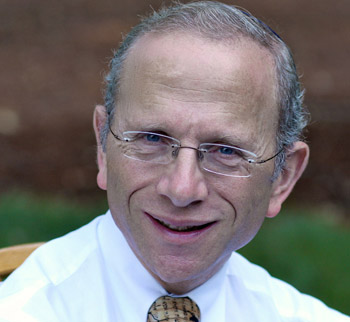TORONTO — Conservative Jewry faces great challenges, but it can learn from other North American Jewish movements that faced similar threats and emerged stronger, says a leading U.S. Jewish historian.
Conservative Jewry is too important to disappear and can provide a spiritual home to the many Jews who don’t currently have one, Jonathan Sarna, a professor of American Jewish history at Brandeis University and chief historian of the new National Museum of American Jewish History, told an audience at Beth Torah Synagogue Nov. 17.
“[Conservative Jewry] has been one of the greatest sources of scholarship in American Jewish life,” Sarna said, adding, “We need to create new ways to reach [unaffiliated Jews], and Conservatives should lead the way. Without a strong centre, North American Judaism runs the risk of dividing into two camps and two Judaisms. We need a strong centre committed to compromise for the sake of Jewish unity. A huge opportunity awaits the Conservative movement. It has to seize it and run.”
Sarna’s lecture was sponsored by the Canadian Council of Conservative Synagogues and co-sponsored by UJA Federation of Greater Toronto. The evening was moderated by former CJN editor Mordechai Ben-Dat.
Fifty years ago, Sarna said, the Conservative movement was the largest of the three Jewish denominations, representing 42 per cent of U.S. Jews.
Today, according to the recent Pew survey on U.S. Jewry, it comprises only 18 per cent of U.S. Jews, and only 11 per cent of those ages 18 to 29, he said.
He recalled that in 1963, the movement’s flagship Jewish Theological Seminary – where his father, Nahum, taught – held a memorial service when U.S. president John F. Kennedy was assassinated.
“This service was seen as the official Jewish community service. To a child like me, in 1963, it felt like the Conservative movement was the centre of Jewish life,” Sarna said.
The Pew survey found that Reform is now the largest denomination in America.
“In the United States, [Conservativism] is half [the size] of the Reform movement, and a little larger than Orthodoxy. [At age 55], its median age is higher than any other religious movement. Conservative Jewish households have fewer children than Orthodox or Reform. Conservative households have .3 children [compared to 1.7] in Orthodox homes.”
These numbers don’t bode well for the Conservative movement, he said, and “too many believe that its moment has passed. They have expressed to me a deep fear of Conservative survival.”
Few people realize, however, that these changes are neither new or unparalleled, he said. “Reform and Orthodoxy faced similar [situations] at the beginning of the [20th] century and have had their strength renewed.”
Reform, which was big in the 1870s, had its challenges in the early 1900s, he said. “By World War I [there was a traditionalist revival], and [it] shattered Reform hopes.”
By 1918, the Conservative movement was ascendant and it looked like Reform would decline, because its tenets ran counter to the beliefs of many eastern European Jewish immigrants.
“Too many found it church-like and too English,” Sarna said
In 1926, he said, Reform rabbis decided the movement was in need of revitalization. “Reform [had to] be reformed, and today it is the largest movement.”
The way it revived itself can be a lesson for any movement, Sarna said. “It saw the handwriting on the wall, and it heeded its critics.
“Once-discarded rituals were brought back, and it changed its women’s and youth movement to make it more alluring. It moved to strengthen its Jewish institutions, and it opted to become a tent, embracing a wide range of practices and ideologies. It agreed to accept differences as precious.”
Diversity was once the goal of the Conservative movement, he said, but since 1968, it has narrowed, as products of the Conservative movement left rather than find space within the movement.
“Reconstructionists departed, and in Canada, several synagogues departed. Recently, non-denominational minyans have attracted young Jews.”
Religions need to widen their circle, he said, “and in [the past] 50 years, the Conservative circle has narrowed.”
Orthodoxy also faced a grave crisis in the 20th century, but it defied prophets of doom, “just as I hope Conservatives will today,” he said.
“We can learn from Orthodoxy. It shaped its survival through its birthrate, and through its investment in schools.
“The Orthodox [movement] did what no investment counsellor would ever [recommend]: it bet the house on day schools. Education is its rank and file, and it became the backbone of revitalization.”
If the Conservative movement wants to win over the next generation, it has to invest in education, and not only in elementary and high school. Half of the 18-to-29-year-olds don’t identify as Conservative, and whoever captures that market will determine the future of American Jewish life.”
Conservatives can learn a lot from Orthodox structure, he said. “Orthodoxy embraces an enormous spectrum. It is not controlled from the top down, but through disparate groups, which cloak themselves in Orthodoxy.
“I think when historians look back, they will say that this big tent is the key ingredient in Orthodox growth.”
